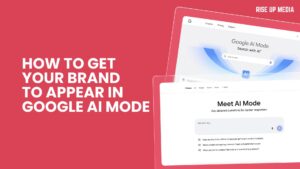Optimizing your web pages for specific keywords is essential for driving leads to any site. However, you might want to change tactics if you’re looking to scale thousands of landing pages. Programmatic SEO is the solution to publishing thousands of web pages and ranking higher on SERP.
Read on to learn what programmatic SEO is, how it works, and how to craft a programmatic SEO strategy for your website.
What Is Programmatic SEO?
Programmatic SEO is a strategy that involves using software to create thousands of keyword-targeted web pages to increase search traffic. With programmatic SEO, you can generate thousands of web pages designed to target thousands of keywords.
The best part is that a software tool can automate this entire process.
Unlike traditional SEO, where you manually create content for SERP ranking, programmatic SEO relies on proprietary data and pre-programmed rules to produce thousands of pages.
Let’s take a look at an example of programmatic SEO:
If you do a quick Google search on ‘hotels in Seville,’ Booking.com and TripAdvisor will be at the top of the results with a link to a list of the 10 Best Hotels in Seville, Spain. These two brands use programmatic SEO to make their brands among your first choices when it comes to travel or accommodation in different places.

Now change the phrase to hotels in Madrid and you will see the result will be displayed at the top of the page again, but with Madrid as the focus.

Interestingly, when you follow both links, you will see the page structure remains relatively uniform, but the content and locations are different.
How Does Programmatic SEO Work?
Programmatic SEO focuses on creating content for low-competition keywords with the highest probability of conversion. For it to be successful, three pillars must be considered.
Focus on Low-Competition Keywords
Programmatic SEO focuses on keywords with less competition to increase on-page ranking. For instance, “things to do in Dallas” is a relatively low-competition keyword that travel sites like TripAdvisor can target.

In this scenario, the keyword difficulty (KD) is 24. Programmatic SEO targets keywords with a low KD. The ROI on each keyword doesn’t have to be high, but ROI at scale is the goal.
Search Intent
Search intent is simply the user’s goal when they visit your site. For programmatic SEO, search intent can either be commercial or transactional. Commercial intent is a user researching before making a buying decision, such as the “best hotels in London.”
Transactional intent is for users trying to complete a specific action, for example, finding the best budget hotels in London. Programmatic SEO focuses on keywords with commercial or transaction intent. An excellent example is a query like “Samsung tablet reviews” for commercial intent and “Samsung tablet products” for transactional intent.
Is Your User Experience Sufficient?
For programmatic SEO to be effective, your website needs a superior user experience. The programmatic SEO software that scales your pages can affect your UX. Therefore, you need intuitive web pages with valuable content that load instantly.
Programmatic SEO can improve your landing pages’ design, mobile compatibility, and performance. Use the programmatic tools to create a landing page and write the content therein.
Regular vs. Programmatic SEO: What’s the Difference?
Regular SEO is a long-term strategy focused on high-quality content and a mix of easy-to-rank and competitive keywords.
Programmatic SEO is focused on almost uniform content, low-competition keywords, and aggregating user traffic from thousands of pages.
The following are the key differences.

Benefits and Drawbacks of Programmatic SEO
Programmatic SEO can provide a range of benefits as follows:
- Delivers quick results – Programmatic SEO helps fasten the slow regular SEO process which is not suited for projects at scale. A programmatic strategy can be used to customize your site and replicate web pages (with keyword variations) 1000X in a short time.
- Focuses on buying intent – Programmatic SEO allows you to focus on keywords with transactional intent. Your website can create thousands of pages concentrating on users who are looking to make purchases.
- Broad audience – Programmatic SEO allows you to reach a wider audience than regular SEO. The use of low-competitive keywords and multiple pages exposes your brand to more organic traffic.
While programmatic SEO is useful for your site, there are some drawbacks you need to consider:
- Compromise quality for quantity – Remember, focusing on scale over quality may seriously affect your site. AI-generated content is prone to mistakes and still needs some level of human oversight to produce rich content for your web pages.
- Google can mistake programmatic SEO for spam – Using a single landing page template with the same AI-generated content for ranking can lead Google to penalize you. Ensure you make each page as useful as possible rather than producing thousands of generic pages.
- Lower priority for search engine indexing – Programmatic SEO can make it laborious for search engines like Google to index your programmatic pages. The large number of generated pages may exceed Google’s crawling budget, which may delay indexing.
How to Create a Programmatic SEO Strategy

The best way to ensure your programmatic SEO efforts work effectively is to go in with a fool-proof strategy. Here are a few steps you can take to create one.
Perform a Competitive Analysis of Your Niche
Identify the competition for the topics you are aiming for. You can search targeted keywords on Google to determine who the top players are in that space. You can then track each competitor’s keywords by searching their domain using tools like Ahrefs, SEMRush, and Moz. This list of keywords gives you a general idea of what niche to focus on.
Conduct Keyword Research
Keyword research for programmatic SEO includes developing head terms and modifiers. Head terms refer to the broad-level category of keywords you are aiming for, while modifiers change your head terms into long-tail keywords. For instance, you can choose a relevant head term for your niche, like “best hotels,” and add a location-based modifier like “in London.” The long-tail keyword will be “best hotels in London.”
Design Your Landing Page Template
You need a template to duplicate the thousands of copies you’ll be publishing. Create one web page to use as the foundation of your programmatic SEO campaign. The web pages will retain certain elements like tables, graphics, lists, reviews, etc. However, the content will have to be different to avoid being penalized. Your web page design will largely depend on what you offer and the type of content.
Collect the Required Data and Generate Content
Create a spreadsheet to collect your data. Arrange the data into relevant segments and titles that correspond with the target keyword. You can match every row to a programmatic SEO page. Ensure each column corresponds with the type of data you plan to insert on your template pages.
Once your spreadsheet is set up, you can populate your pages with rich content. Incorporate multimedia like infographics, videos, and images to spruce up the content. Add interactive elements like polls or surveys to encourage user participation.
Optimize Your Programmatic Pages
Optimize your on-page elements like meta tags, headers, and image alt text to enhance your technical SEO. Add internal links to encourage your readers to read more of your content and enhance their user experience.
Besides, earning backlinks gives your site more authority and drives more traffic to your pages. Keep your URL short, use lowercase words, and add hyphens to separate the words to make it easier for Google to crawl and index your web pages for search traffic.
Test and Refine the Pages
Once your pages are live, monitor them continuously for issues. Analytic tools can help you monitor your site’s performance and identify areas for improvement.
Tools like Google Analytics and SEMRush can audit and discover any SEO or technical issues. You can monitor your site traffic using metrics such as page views, bounce, conversion, and engagement rates. You can then use the information to improve the layout of your landing pages.
The Dos and Don’ts of Programmatic SEO
When building your programmatic SEO strategy, here are a few things you need to keep in mind.
- Create unique pages – Ensure you use originally written content when you are running programmatic SEO. Google ranks unique content and multiple perspectives higher than generic keyword-targeted content.
- Avoid 100% AI-generated content – There are several platforms out there where you provide keywords and get purely AI-generated pages in return. If you publish these pages without a human reviewing them, Google may flag them as spam. The best course of action is to approach programmatic SEO using templates and proprietary data.
- Commit your time to research – Programmatic SEO is time and resource-intensive as it requires regular monitoring and maintenance. Moreover, you need to have at least some degree of technical understanding of SEO to make this work.
Need Help With SEO?
Programmatic SEO can help you scale your SEO strategy and drive even more users to your site. Still, you can employ several other SEO strategies to boost your brand’s online visibility and increase your leads.
If you’re looking for help in creating and implementing an SEO strategy for your brand, we’d love to help.
Contact us now to run an effective SEO strategy for your company!




